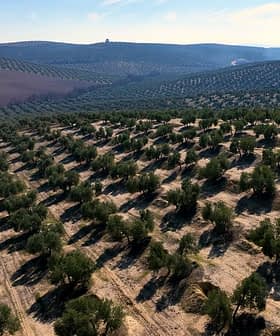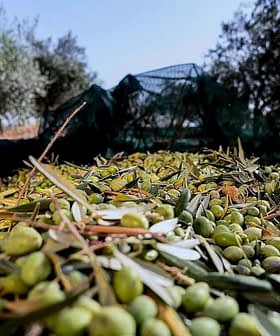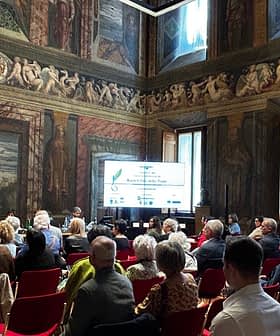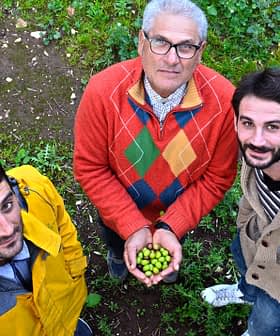A solution that couples technology with transparency in olive oil commercialization is among the big winners at the latest Tuttofood event, one of Italy’s most prominent food expositions.
The award comes on the heels of Italian producers’ increasingly widespread adoption of olive oil traceability systems.
Producer Pietro Coricelli was awarded at Tuttofood for its tracking system, which combines QR codes printed on olive oil labels and blockchain technology.
See Also:Researchers Use AI to Identify EVOO ProvenanceBy scanning the QR code with their smartphones, consumers can access information about the bottle’s contents, including the results of the physiochemical analysis, the company that did the analysis, the results of the panel test and eventually, other panel test outcomes.
The legitimacy of the information is confirmed using the blockchain technology of an external supplier, which allows consumers to track the whole production process, from olive harvest to olive oil sales.
On the blockchain, data about every process step are encrypted and time-stamped and, therefore, cannot be modified.
At the same food event, Oleificio Zucchi, a large producer, showcased the deployment of its QR code tracking system on many of its extra virgin olive oils.
By scanning the code on a bottle’s label, consumers are directed to information about the bottle’s sustainable packaging and contents, such as the country and region of origin of the olives used to produce olive oil, the olive varieties and their characteristics.
QR code and tracking technologies are increasingly popular among Italian producers and have been adopted by the Olio Toscano Protected Geographical Indication (PGI) consortium.
“All olive oils certified by the Toscano PGI consortium come with a paper collar containing a unique code for each bottle,” Alberto Morettini, commercial and marketing director of Frantoio di San Giminano in Tuscany, told Olive Oil Times.
“This solution allows the consumer to trace, through a web platform, the history of the whole product,” he added. “In particular, the traceability of the product, which starts from the olive grove and ends with bottling, also passing through the information about olive milling, of course.”
Frantoio di San Giminiano produced about 50,000 kilograms of Toscano PGI extra virgin olive oil last year. “It is a truly good production volume, given the product’s very high quality,” Morettini said.
Besides the unique organoleptic qualities of the extra virgin olive oil, exported to every continent, Morettini believes that tracking technology also plays a role in winning consumers’ attention.
“Its refined packaging and the traceability of the product chain guaranteed by the consortium, without a doubt, make [Toscano PGI] one of the finest olive oils in the world,” he added.
According to the Toscano PGI consortium, the tracking code applied on every single bottle lets the consumer know which olive growers were involved in the production, who milled the olives and bottled the oil.
“Our label guarantees to the consumer that every bottle of Toscano PGI extra virgin olive is 100 percent authentic,” the consortium said.
A unique code on the label identifying each bottle is also required for all certified extra virgin olive oil produced in the southern Tuscan region of Mount Amiata.
According to the regional authorities, these initiatives are crucial to raising consumers’ awareness about many Tuscan agri-food products of excellence.
The need to raise consumer awareness about olive oil quality and increase trust in high-quality production is also the focus of a QR code-based traceability project under development in Puglia, Italy’s largest olive oil-producing region.
The Certo (“Trustworthy,” in Italian) project, funded by the regional government, focuses on the characterization and certification of the local olive oil production areas. The goal is to improve the transparency of local olive oil Protected Designation of Origin certifications.
It involves the deployment of authenticity analyses conducted by nuclear magnetic resonance and near-infrared spectroscopy, which allow users to map the metabolomic profiles of the local olives.
The information on the origin and quality of the olives and olive oil will then be transferred to the consumers using a QR code on the label.
While the impact of the new platform on consumer behavior remains unclear, Italian authorities emphasized how back-office platforms counter fraud and certify quantities and qualities.
“All producers that intend to bottle and label their olive oil for sale… must keep in mind that such activities, and even the sole labeling of the product, triggers the National Olive Oil Digital Registry,” Roberta Capecci and Roberto Ciancio, officials at the Italian central inspectorate of quality protection and fraud prevention of agri-food products (ICQRF), told Olive Oil Times.
Capecci and Ciancio added that the registry “is a tool adopted on a national level to allow a timely control of olive oil flows handled by the individual operators of the olive oil production chain.”
The registry requires operators to make compulsory entries for each production batch, quantities stored and movement and processing of olives, olive pomace and olive oil. All of this is with no regard if the product’s final destination is the domestic or the international market.
“It allows the timely remote monitoring of any movement from every mill and warehouse located in Italy, and it allows controlling authorities to easily access the names and the addresses of the subjects, national or foreign, involved in the handling,” Capecci and Ciancio concluded.








